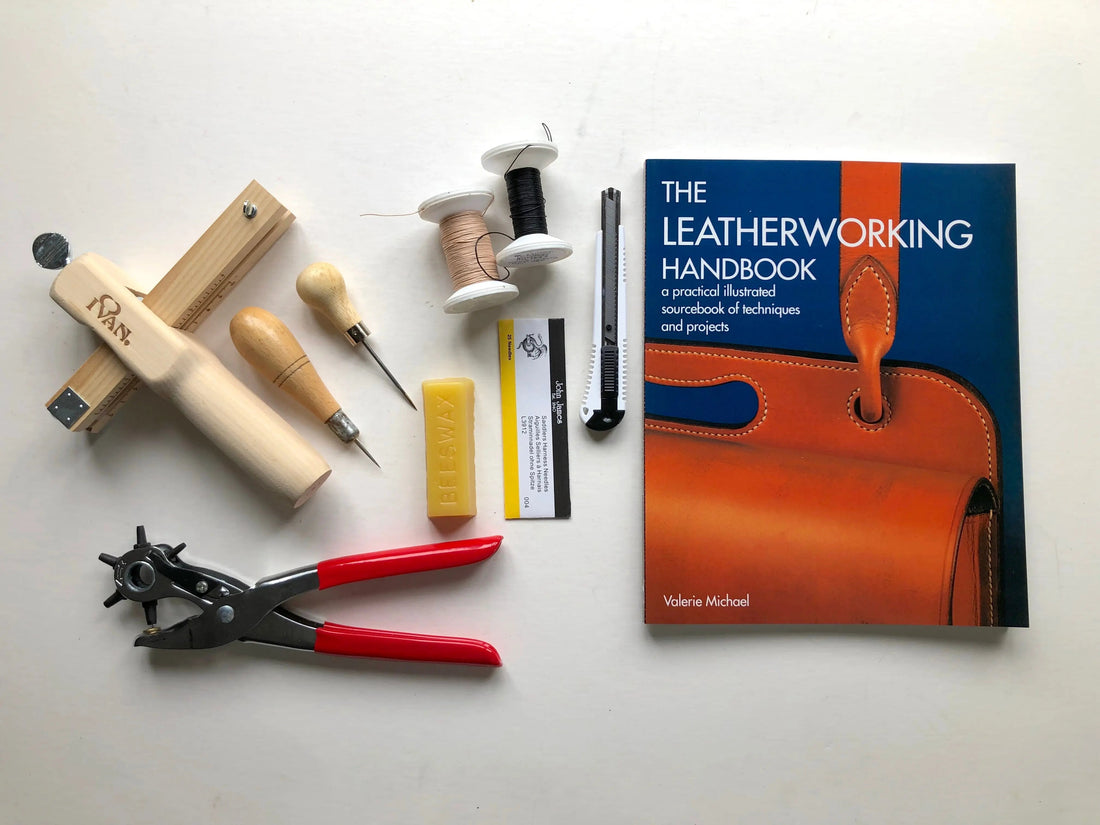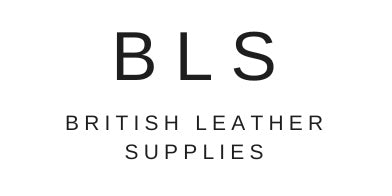
Top 10 Must-Have Tools for Every Leather Crafter
Top 10 Must-Have Tools for Every Leather Crafter
Leather crafting is a rewarding and timeless artform, but having the right tools is essential to transforming raw material into a masterpiece. For experienced artisans and beginners alike, choosing the right supplies can make all the difference in quality and craftsmanship.
Whether you're a hobbyist creating small accessories or a professional crafting intricate leather goods, this guide will take you through the top 10 leather crafting tools every leatherworker needs to get started or level up. Expect tips, tool insights, and handy recommendations to boost your workshop game.

1. Cutting Mat – The Workbench Hero
A sturdy cutting mat serves as your workspace foundation. It protects your bench or tabletop from damage while ensuring cutting tools stay sharp over time. Look for self-healing cutting mats, which repair small nicks and extend usability.
🔧 Pro Tip: Get a large mat marked with measurement grids to help you cut straight lines and measure leather pieces with precision.
2. Utility Knife – The Go-To Blade
Every leather crafter needs a sharp utility knife for clean, straight cuts. It's a versatile tool that works for cutting large leather pieces to size or creating straight edges for straps. A high-quality retractable blade with replaceable edges, such as an X-Acto or Stanley knife, is the perfect fit.
🔧 Pro Tip: Keep extra blades handy to avoid working with a dull edge, which can tear rather than cut leather.
3. Round Knife or Head Knife – For Detailed Cutting
A round knife (also known as a head knife) is an essential leatherworking tool for more advanced projects. It allows you to cut curves and intricate designs with incredible precision.
While round knives require practice to master, their razor-sharp edge makes them invaluable to professional artisans tackling detailed work.
🔧 Pro Tip: Always strop the knife before use to keep the blade razor sharp—it’s worth the extra effort to achieve flawless results.
4. Leather Shears – Snipping Made Easy
When working on smaller projects or thin leather, high-quality leather shears are a lifesaver. These scissors are specially designed for cutting through thicker materials like leather, ensuring clean edges and no fraying.
🔧 Pro Tip: Invest in heavy-duty versions with ergonomic grips to make extended crafting sessions more comfortable.
5. Edge Beveler – Finish with Finesse
Sharp and smooth edges give leather projects a professional touch, and that's where an edge beveler comes in. This tool trims the sharp edges of your leather, making them round and tidy while preparing them for burnishing.
For beginners, smaller bevel sizes (e.g., #1 or #2) are easier to handle and work well on lighter leather weights.
🔧 Pro Tip: Use the beveler at an angle to achieve clean, consistent results along the entire edge.
6. Hole Punch – Add Buckles and Straps Seamlessly
Hole punches make it easy to add holes for belt buckles, straps, and stitch alignment. Available in various styles, revolving rotary punches provide flexibility with size adjustments, while drive punches are perfect for more heavy-duty tasks.
🔧 Pro Tip: Set the punch against a soft material like scrap leather or cork to prevent damage to both the punch and your work surface.
7. Awl – Precision Piercing Awaits
One of the most versatile leatherworking essentials, the awl is a sharp, pointed tool used to create holes before stitching. A good quality awl will make a clean hole without enlarging it too much, ensuring the final stitch is neat and snug.
For beginners, try a stitching awl with an ergonomic handle to avoid strain during longer projects.
🔧 Pro Tip: Practice using your awl on scrap leather to nail down clean, evenly spaced holes.
8. Stitching Chisel – Perfectly Spaced Stitches
If you want crisp, professional stitching lines, a stitching chisel is an absolute must-have. It punches multiple prongs into the leather at once, ensuring evenly spaced stitches every time.
Look for chisels with 2-prong, 4-prong, and 6-prong variations to suit your project needs.
🔧 Pro Tip: Pair stitching chisels with mallets to avoid damaging metal components—and always work on a soft punching board to protect your tools.
9. Mallet – Your Non-Marring Companion
When working with chisels, hole punches, or stamps, a mallet is essential for delivering force without damaging your tools or leather. Opt for a non-marring mallet made from rawhide, wood, or plastic. Rubber mallets are gentle yet effective choices for most projects.
🔧 Pro Tip: A rawhide mallet ensures an even finish while reducing noise, perfect for smaller workshops or shared spaces.
10. Burnishing Tool – Polish Your Project
Burnishing smooths and polishes leather edges for a clean, polished look. This final step is key to achieving professional-quality results for items like handbags, wallets, and belts.
Wooden burnishers are an affordable and effective option, whereas motorized kits offer a more advanced option for scaling up your craft.
🔧 Pro Tip: Dampen leather edges slightly before burnishing, adding friction for a smoother finish.
Bonus Tools for Advanced Crafters
While the above tools are essentials, consider upgrading your toolkit with these additional items as your skills grow:
- Leather Skiver (for thinning leather edges)
- Stamping Set (for decorative designs)
- Glue or Cement Applicator (for strong adhesives in complex projects)
Why Invest in Quality Leatherworking Tools?
High-quality tools pay off in clean cuts, smooth finishes, and lasting durability. While it might be tempting to cut corners with budget options, the right equipment enhances your craftsmanship and results over time.
And remember—practice makes perfect. With a little patience and the right tools, you'll be crafting wallets, belts, and handbags that rival the professionals in no time!
Tools in Hand? Time to Craft!
Whether you're a beginner testing the waters of leather crafting or a seasoned artisan upgrading your toolkit, these essential tools are the foundation of beautiful, professional-quality projects. Start with the basics, master your skills, and expand your collection as your confidence grows.
Have questions about leatherworking essentials or tool recommendations? Drop a comment below—or send us a message!
Happy crafting!
